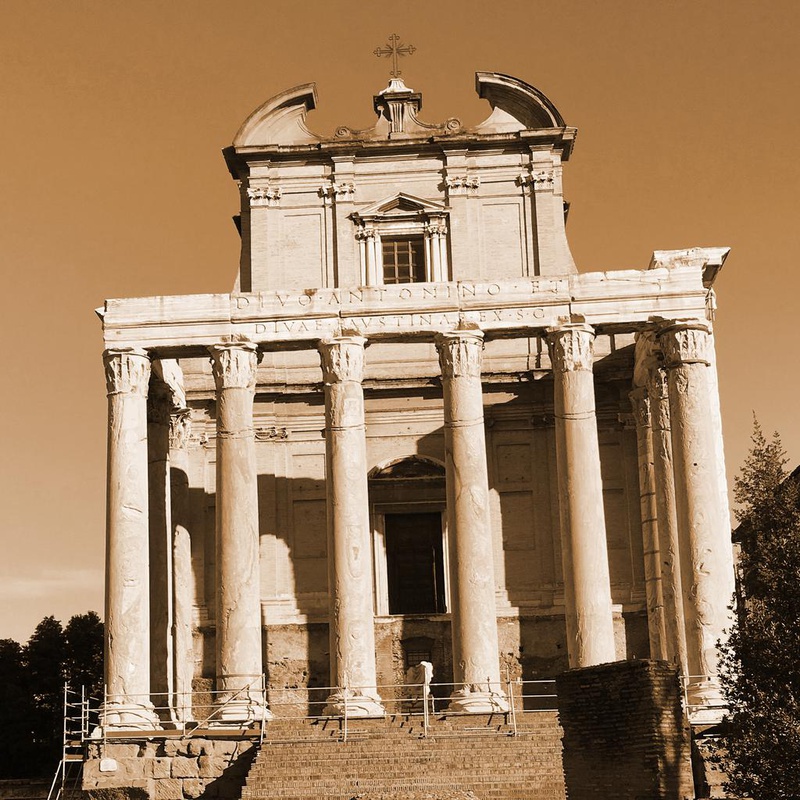Posted by Shazarch on 18 Mar 2021
Temple of Antoninus and Faustina
141 AD, Roman Forum, Rome
Cultural site
The Temple of Antoninus and Faustina, dedicated to the deified Empress Faustina the Elder, stands as an architectural emblem of the Antonine dynasty's reverence for tradition and religious piety. Erected in 141 AD following the Senate's decree after Faustina's death, the temple was strategically positioned at the Roman Forum's entrance. Its placement next to the Basilica Aemilia and opposite the Regia, facing the Temple of Vesta, underscored the imperial commitment to Rome's religious and political heritage. Emperor Antoninus Pius, who was adopted by his predecessor Hadrian not for familial ties but for his virtues and governance, was awarded the title 'Pius' by the Senate. His dedication to Hadrian's deification, completion of the Hadrian Mausoleum, and reverence for ancestral customs were integral to his reign. The temple's design, likely influenced by the Temple of Vespasian and Titus, featured a peperino core clad in white marble, a portico of cipollino marble columns with Corinthian capitals and Attic bases, and rich decorative elements like gryphons and garlands. The temple's transformation over centuries reflects the evolving cultural landscape, with the building incorporated into the church of San Lorenzo in Miranda during the 17th century, though it might have served religious purposes as early as the 7th-8th century. The temple's historical and architectural significance is further accentuated by its association with the puellae faustinae, an initiative by Antoninus for orphan girls, symbolizing the empire's care for its citizens.
